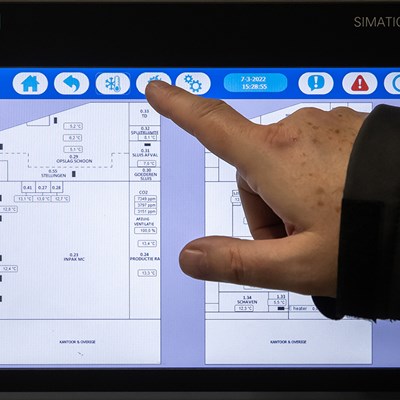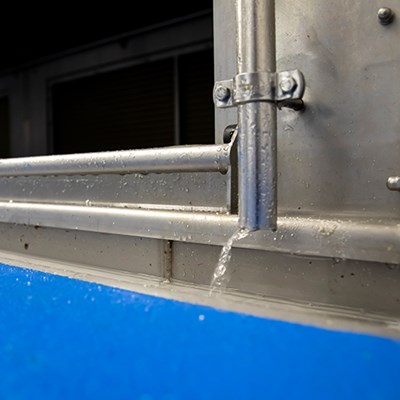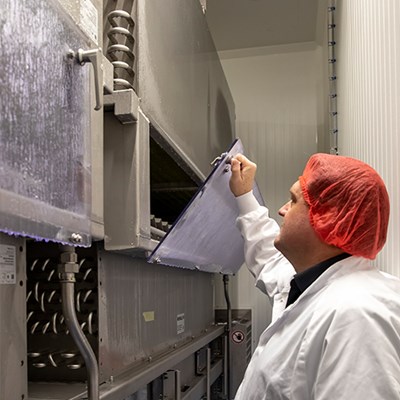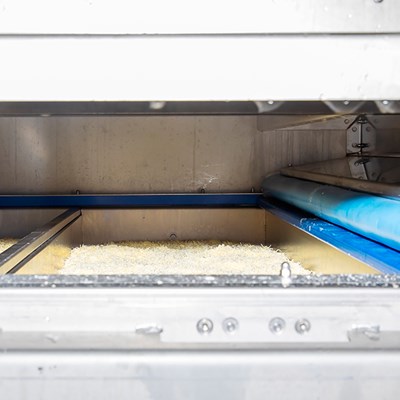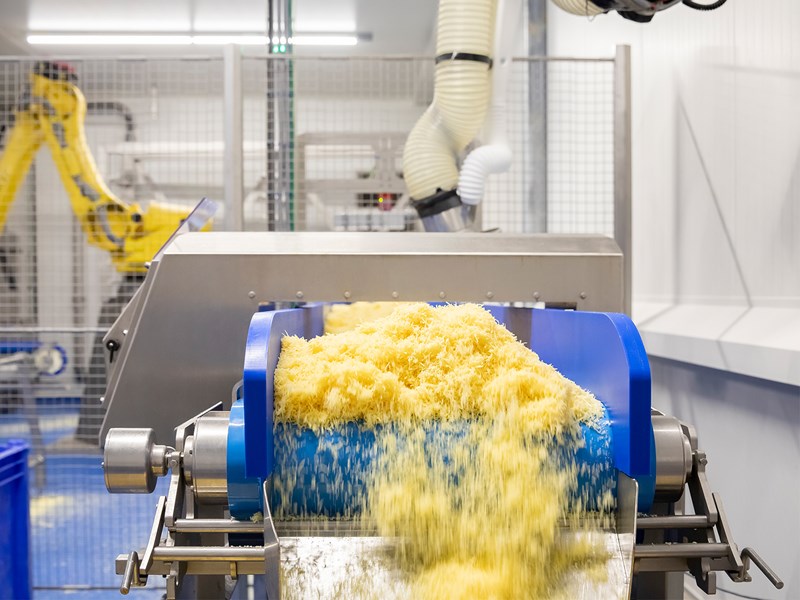
Drying cheese sustainably using a gasless drying tunnel
Request: A gasless drying tunnel for the production of powdered cheese
EQUANS Refrigeration built a drying tunnel with an integrated cold and hot installation for the new Grozette production plant. With this clever piece of engineering, the cheese processor can dry cheese products without gas and thus cost-efficiently and sustainably. Production Director Peter Gerber tells more about it during an exploration of the technical highlights.
Hybrid cooling system
Through the stylish office space, we reach the linen room. Hairnet and white coat on, off to the roller bench to disinfect hands and shoes. Once in the cheese storage, the mercury drops to 7°C. The central cooling installation running on the natural refrigerants CO2 and ammonia keeps thousands of cheeses at the right temperature. They are quietly waiting to be processed. Once the cheese has been soaked in a warm bath and the plastic rind is removed, the cheese is grated into grains or strands and evenly distributed in trays. Then comes the supreme moment: the drying process in the brand new tunnel.
Tripled capacity
With 40 meters and 12 modules, the drying tunnel is an impressive apparition. Gerber smiles proudly: “Each module blows dry, warm air through the grater. The direction in which the air is blown changes frequently to ensure that the cheese in the top and the bottom of the tray is equally dried. With this drying tunnel, we have three times more capacity than before. If one module fails, we still have more than 90% capacity available. This is ideal.”
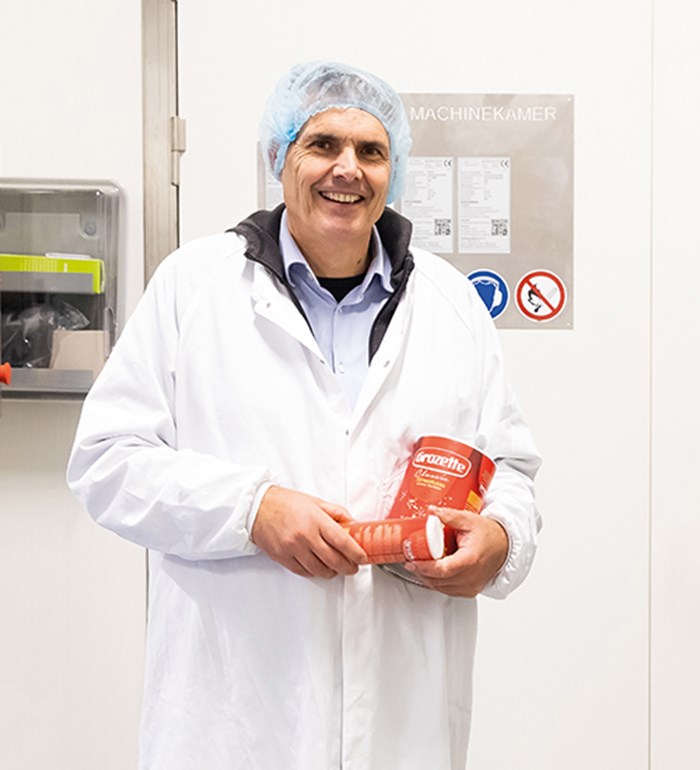
Drying at a low temperature
Grozette can adjust any parameter via the control system, from the air temperature and blowing speed to the drying time and the relative humidity. This is important because the products are shipped all over the world and every customer requires a specific degree of drying. “We want the cheese to dry, but not for it to sweat. If the cheese sweats, it leads to fat escaping, causing the cheese to become sticky and clumpy. Fortunately, we are not concerned about this because we now dry with lower temperatures.” Gerber inspects a cheese which came rolling out of the tunnel. “Look, just the way we want it.”
“We are very happy that we chose EQUANS.”
Without gas
In addition to capacity and quality, sustainability was an important requirement for the tunnel's design. Gerber explains: “We want to do business in a socially responsible manner. Using gas from Groningen and emitting a lot of emissions is no longer acceptable. EQUANS designed a drying tunnel that is fully electric and therefore functions gas-free. The tunnel is also equipped with smart heat recovery. This immediately appealed to us and contributed to our BREEAM Outstanding certificate and the award of the SDE++ subsidy.”
With heat recovery
Gerber opens a door in the tunnel's casing. He points to stainless steel pipes that run from the floor to the tunnel: “Residual heat from the cooling plant is supplied via these pipes. We use part of the residual heat to heat water for cleaning or to loosen the cheese rind. According to EQUANS calculations, we will save more than 40% energy using heat recovery.”
Hygienic design
In the same housing, the transparent hatches make it possible to visually follow every tray of cheese in the tunnel. According to Gerber, the shutters have another plus: “They can be opened and closed. All parts in the tunnel are therefore easy to clean thoroughly. Drying halal or kosher cheese must be done on a clean line. Cleaning is fast because of the shutters and this makes us more flexible in the switchover. Using bins in the drying tunnel instead of a conveyor belt is of course also more hygienic.”
Robots
After drying, the cheese is packed. The removal of the cheese trays from the tunnel – just like the supply – is done by powerful robots standing several meters high. They know exactly when and which containers have to be placed on or removed from the tunnel's conveyor chain. Gerber: “The tunnel, robots and other equipment must be able to communicate with each other. Only then can we use the full capacity of the drying tunnel. After some start-up problems, EQUANS made sure that all parts speak the same language.”
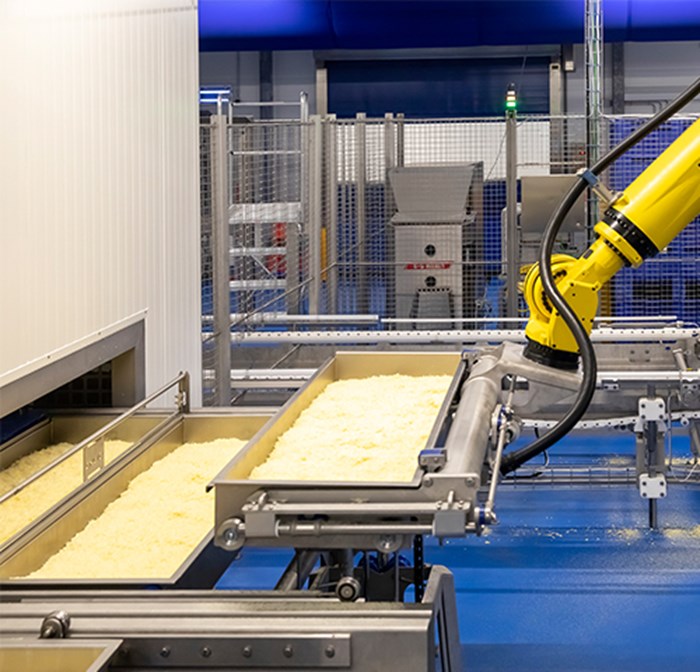
Testing and optimising
Once back at the office, Gerber looks back on the collaboration: “EQUANS' knowledge and experience with tunnels in the fish processing industry came in handy. It led to good ideas for the design of the drying tunnel. Even before we had given the order, EQUANS built a prototype of the tunnel that we could test and optimize at their production location in Emmeloord. The fitting of all installations in the new building also went smoothly. We are very happy that we chose EQUANS.”
Meer weten over dit project en productieprocessen zonder gas?

